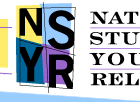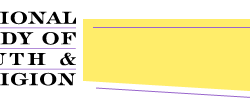|
Cuaresma, Sallie and Martha Sadongei. 2025. "Native American Ministry: Voices for a New Dawn." Church and Society vol. 90, pp. 1-87.
Abstract: Introduction: Native American Ministry: Voices for a New Dawn, by S Cuaresma, M Sadongei. Tribal Sovereignty: Exploring the dynamics of philosophy, law, tradition, and pragmatics, by M Ball. How has the Reformed Tradition Impacted Indian Culture?: An invitation to a dialog about some fundamental beliefs, by C Corbett. The Ghouls Return: The implications of the abuse and resultant pain from a well-intentioned law, by V Deloria. People, Not Mascots: The how and why of the Los Angeles schools' decision to drop the use of American Indian mascots, by J Orendorff. The Feelings of My People, by B Raymond. Youth Ministry, Indian Style! Aye!: "Jesus loves...all the children of the world", by B Monahan. The New Kids on the Block: Kids from the reservation face new urban life, by A Tohannie. Urban Indians: Hope and Hopelessness, by M Fogarty. Native American Urban Ministry: Southern California Style, by R Burgess, P Johnson. Just As I Am: Recognition, determination, action are part of our faith journeys, by C Kent. Let Us Open the Container of Wisdom: Perhaps this will be a voice from the future, by I Porter. Culture and Religion: Another Look: Traditional and Christian beliefs have intersections and divergences that bear exploring, by J Dudley. Passing It On: "I love to tell the story" is another call to sharing, by M Sadongei. Voices for a New Dawn, by S Cuaresma. Resources: Associations and Organizations. [Source: RI]
Tohannie, Angel. 2025. "The New Kids on the Block: Kids from the Reservation Face New Urban Life." Church and Society vol. 90, p. 34.
Navarro, Jay, Stan Wilson, Lawrence R. Berger, and Timothy Taylor. 1997. "Substance Abuse and Spirituality: A Program for Native American Students." American Journal of Health Behavior vol. 21, pp. 3-11.
Abstract: An innovative program to prevent substance abuse among Native American students, implemented at the Instit for American Indian Arts in Santa Fe, NM, emphasized traditional values, history, & spirituality to enhance self-esteem. It involved readings, classroom discussions, Native American ceremonies, & student projects. Among the issues that surfaced were concerns about identifying "legitimate" elders for ceremonies, extensive diversity among Native American youth, relative neglect in the literature of women's importance in tribal life, & both common & conflicting religious themes among different tribes. The program was evaluated via final exam essays & class discussion among 35 students. [Source: SA]
Garrett, Michael Tlanusta. 1996. ""Two People": An American Indian Narrative of Bicultural Identity." Journal of American Indian Education vol. 36, pp. 1-21.
Abstract: A narrative drawn from an interview with a tribal elder from the Eastern Band of Cherokee Indians in NC is used to examine culture & identity conflicts faced by American Indian youth during the process of acculturation & to illustrate a model of bicultural identity development. The influence of informal education provided by the traditional Cherokee approach is evidenced in the five stages of bicultural identity formation: (1) personal identity, (2) choice, (3) denial/confusion, (4) appreciation, & (5) integration. At issue are the developmental contributions to of naming, extended family relations, traditional approaches to health, life lessons, individual choices, & spirituality in mending the rupture between two cultures. [Source: SA]
Regnier, R. 1994. "The Sacred Circle - a Process Pedagogy of Healing." Interchange vol. 25, pp. 129-144.
Abstract: This paper proposes a process pedagogy based on an aboriginal approach to healing. It is founded on the Sacred Circle teachings of Canadian Plains Indians and on the educational practices undertaken at a school for aboriginal youth, the Joe Duquette High School in Saskatoon, Saskatchewan, Canada. Healing is viewed here as ''transition toward meaning, wholeness, connectedness, and balance'' (Katz & St. Denis, 1991, p. 24). As aboriginal pedagogy, this approach to the practice and theory of teaching is self-consciously founded on process symbolized in the Sacred Circle. It is presented here as part of a critical theory of education committed to human emancipation that recognizes thaL the appropriation of an aboriginal world view as a foundation for teaching is undertaken within the context of modem political and cultural systems and institutions that have excluded, denied, or rejected aboriginal world views. The Sacred Circle is a ''traditional symbolic circle'' that incorporates die spiritual beliefs of many Indian tribes of North America, including Dakota Nations, Blackfoot Confederacy, Cree, Saulteaux, and Assiniboine nations in Canada. It symbolizes harmony with the belief that life occurs within a series of circular movements that govern their relationship with the environment. Although the Sacred Circle has symbolized aboriginal world views for thousands of years, some schools are beginning only now to use it as a self-conscious foundation for education as healing. The paper begins with Whitehead's criticism of Western metaphysics and his notion of reality as process. These ideas and some of his views about education and teaching provide wi introduction to and framework for developing the notion of healing as a process pedagogy based upon the Sacred Circle concept. The Sacred Circle is examined as the expression of an aboriginal metaphysics in which reality is conceptualized as process, the movement of life through wholeness, connectedness, and balance. Healing and teaching are viewed as the transition to meaning in that movement. Finally, process pedagogy as healing is interpreted as having the three phases of belonging, understanding, and critical reflection through an examination of practices at the Joe Duquette High School. [Source: SC]
Swaim, Randall C., Eugene R. Oetting, Pamela Jumper Thurman, Fred Beauvais, and Ruth W. Edwards. 1993. "American Indian Adolescent Drug Use and Socialization Characteristics: A Cross-Cultural Comparison." Journal of Cross Cultural Psychology vol. 24, pp. 53-70.
Abstract: Examined are the links between drug use & the socialization characteristics of family, religious identification, school adjustment, & peer drug associations in a group of American Indian youth. Previous research (Oetting, Eugene R., & Beauvais, Fred, "Peer Cluster Theory, Socialization Characteristics and Adolescent Drug Use: A Path Analysis," Journal of Counseling Psychology, 1987, 34, 3, 205-213) using a path model to test the relationships between these variables among Anglo youths demonstrated that peer drug associations mediate the influence of the other variables, & that peers are likely to be the primary factor in youth drug abuse. Here, the same path model is applied to a group of 477 northern Plains & southwest American Indian students in grades 11 & 12 from 2 reservations. Ss were administered an anonymous drug & alcohol survey during regular school classes. The findings of the study on Anglo youths were replicated with two important exceptions: peer drug associations were not as highly correlated with drug use for Indian youths, & family sanctions against drugs had a direct influence on drug use in addition to an indirect influence. It is suggested that differences in family dynamics among Indian youth may account for these discrepancies. [Source: SA]
Beauvais, F. 1992. "Characteristics of Indian Youth and Drug-Use." American Indian and Alaska Native Mental Health Research vol. 5, pp. 51-67.
Abstract: The overall high rates of drug use found among Indian youth may be accounted for in part by lack of educational and employment opportunity and other endemic problems of Indian reservations. Individual drug involvement is most highly related to membership in drug-using peer clusters; but because of physical isolation, links between drug use and close friends are weaker for Indian youth, and family influence is felt more strongly. Anxiety, depression, and low self-esteem are not related to drug involvement, but angry youth are more likely to have drug- involved peers. Risk factors for Indian youth are low family caring, age first drunk, poor school adjustment, weak family sanctions against drugs, positive attitudes toward alcohol use, risk of school dropout, father not at home, and poor religious identification. [Source: SC]
Warrior, Robert Allen. 1990. "Indian Youth: Emerging into Identity: Sweatlodge or Aa, It's "One Day at a Time"." Christianity and Crisis vol. 50, pp. 82-86.
|



